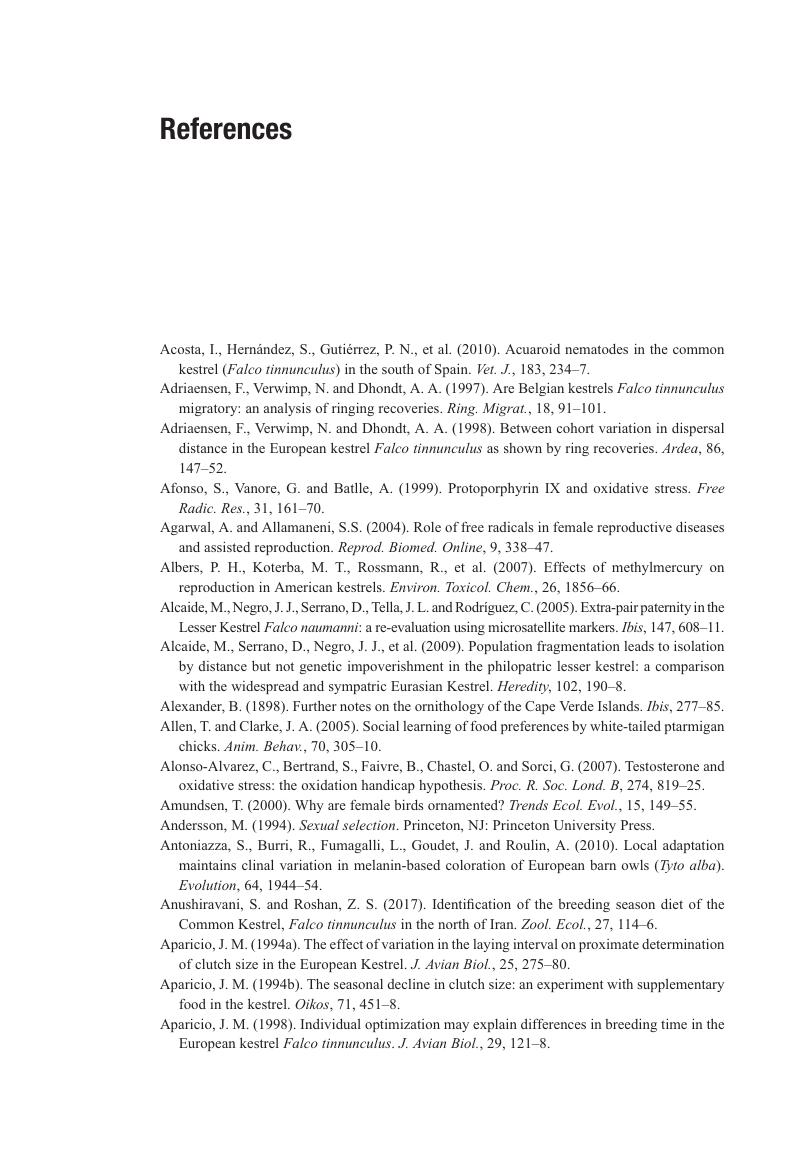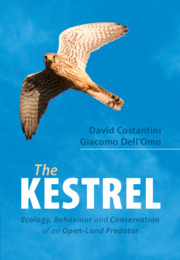Book contents
- The Kestrel
- The Kestrel
- Copyright page
- Contents
- Preface
- 1 Systematics and Evolution of Kestrels
- 2 Feeding Ecology
- 3 Habitat Use
- 4 Breeding Density and Nest Site Selection
- 5 Colourations, Sexual Selection and Mating Behaviour
- 6 The Reproductive Cycle: From Egg Laying to Offspring Care
- 7 Ecological Physiology and Immunology
- 8 Environmental Toxicology
- 9 Movement Ecology
- 10 Conservation Status and Population Dynamics
- References
- Index
- Plate Section (PDF Only)
- References
References
Published online by Cambridge University Press: 29 August 2020
- The Kestrel
- The Kestrel
- Copyright page
- Contents
- Preface
- 1 Systematics and Evolution of Kestrels
- 2 Feeding Ecology
- 3 Habitat Use
- 4 Breeding Density and Nest Site Selection
- 5 Colourations, Sexual Selection and Mating Behaviour
- 6 The Reproductive Cycle: From Egg Laying to Offspring Care
- 7 Ecological Physiology and Immunology
- 8 Environmental Toxicology
- 9 Movement Ecology
- 10 Conservation Status and Population Dynamics
- References
- Index
- Plate Section (PDF Only)
- References
Summary

- Type
- Chapter
- Information
- The KestrelEcology, Behaviour and Conservation of an Open-Land Predator, pp. 176 - 211Publisher: Cambridge University PressPrint publication year: 2020



